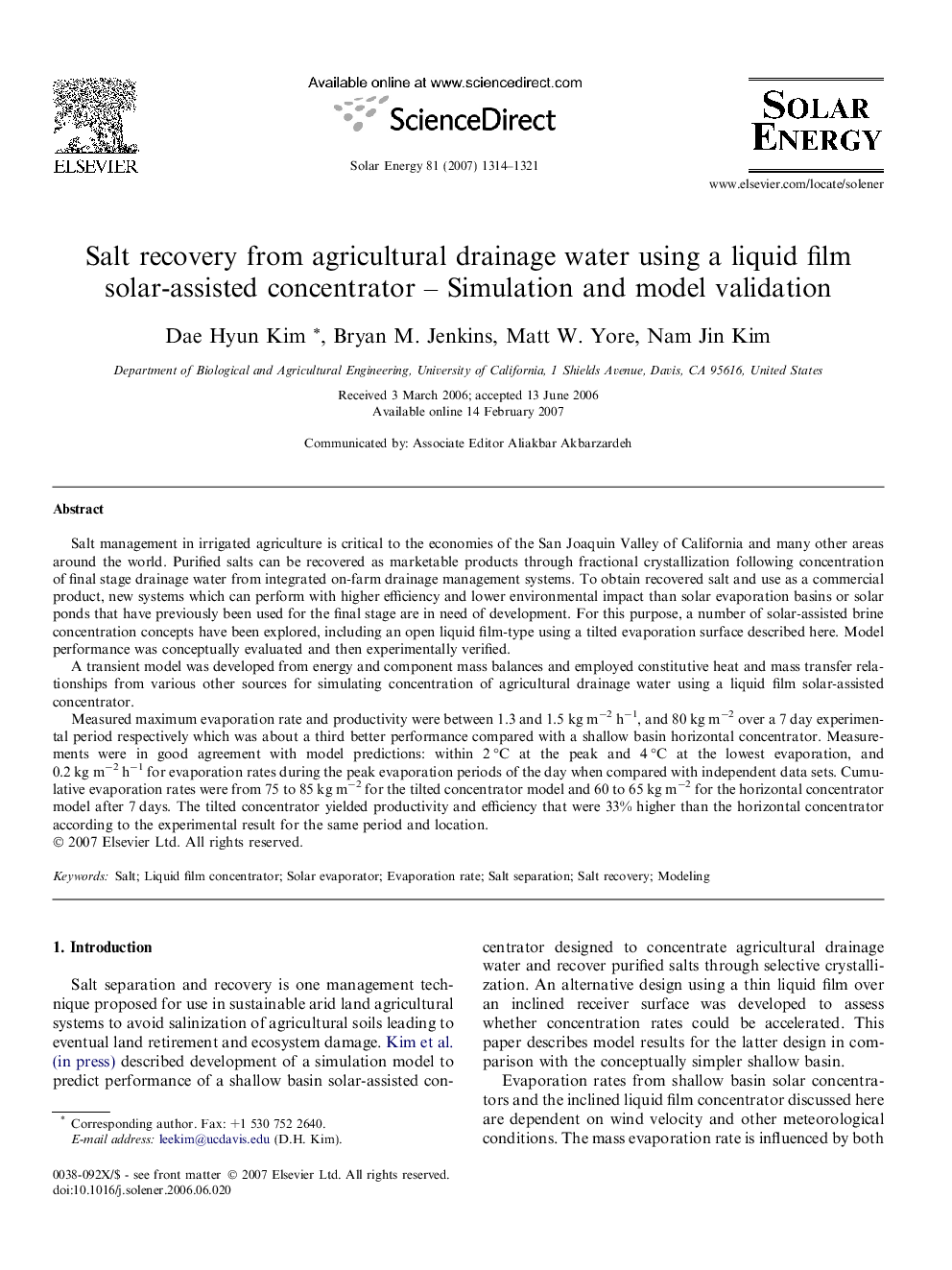| Article ID | Journal | Published Year | Pages | File Type |
|---|---|---|---|---|
| 1552254 | Solar Energy | 2007 | 8 Pages |
Salt management in irrigated agriculture is critical to the economies of the San Joaquin Valley of California and many other areas around the world. Purified salts can be recovered as marketable products through fractional crystallization following concentration of final stage drainage water from integrated on-farm drainage management systems. To obtain recovered salt and use as a commercial product, new systems which can perform with higher efficiency and lower environmental impact than solar evaporation basins or solar ponds that have previously been used for the final stage are in need of development. For this purpose, a number of solar-assisted brine concentration concepts have been explored, including an open liquid film-type using a tilted evaporation surface described here. Model performance was conceptually evaluated and then experimentally verified.A transient model was developed from energy and component mass balances and employed constitutive heat and mass transfer relationships from various other sources for simulating concentration of agricultural drainage water using a liquid film solar-assisted concentrator.Measured maximum evaporation rate and productivity were between 1.3 and 1.5 kg m−2 h−1, and 80 kg m−2 over a 7 day experimental period respectively which was about a third better performance compared with a shallow basin horizontal concentrator. Measurements were in good agreement with model predictions: within 2 °C at the peak and 4 °C at the lowest evaporation, and 0.2 kg m−2 h−1 for evaporation rates during the peak evaporation periods of the day when compared with independent data sets. Cumulative evaporation rates were from 75 to 85 kg m−2 for the tilted concentrator model and 60 to 65 kg m−2 for the horizontal concentrator model after 7 days. The tilted concentrator yielded productivity and efficiency that were 33% higher than the horizontal concentrator according to the experimental result for the same period and location.
